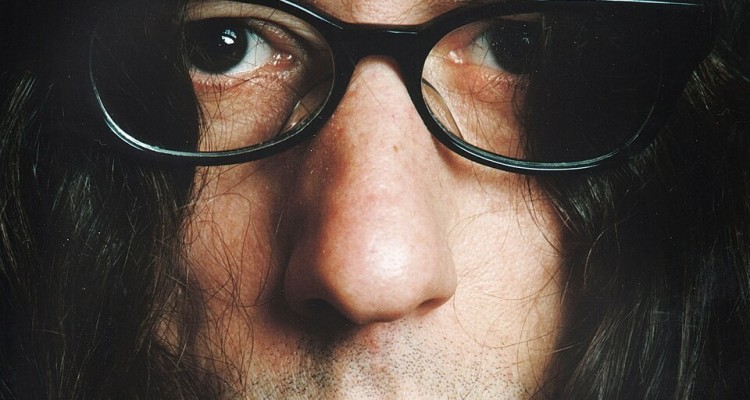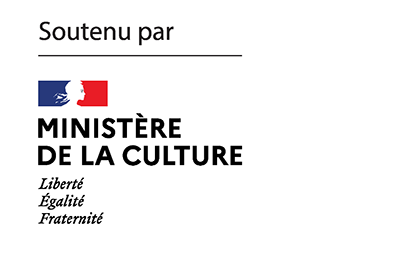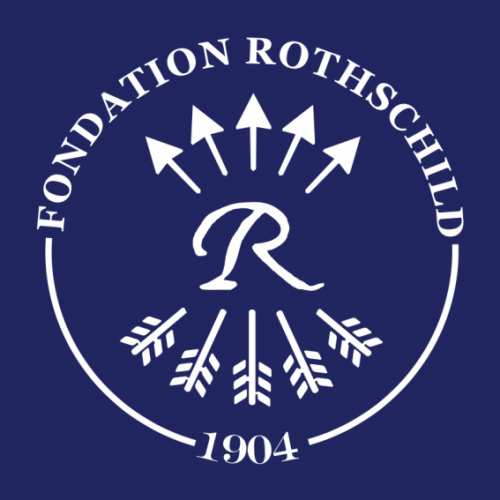Would the prohibition of shehita amount to the prohibition of French Judaism? To many Jews in France, where rumors of a bill outlawing Jewish ritual slaughter have already sent tremors through a community both attached to their country and the maintenance of an already-threatened religious practice, it is beginning to look that way. To ban shehita would simply be one humiliation too many. The question of ritual slaughter is not a question alone of this practice or the comfort of the French Jewish community. Such a debate goes to the heart of the implicit accords that bind French Jews to their nation. The status of shehita also touches on Jews’ place in Europe, and how the continent reckons the importance of its Hebraic roots. In the second installment of his essay on shehita for K, David Haziza addresses these questions.
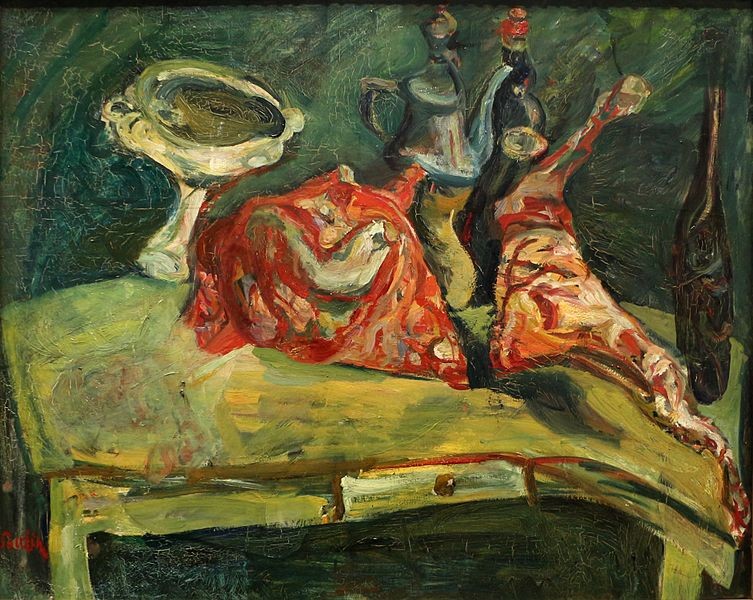
In the first part of this essay, I left unaddressed an important facet of the debate over shehita: the Jewish community’s own internal discussions over the practice of ritual slaughter. Of course, the Torah is a living law, and as such there is latitude in religious holdings about how one should end an animal’s life. For example: there is no consensus on whether shehita and factory farming can coexist. According to some observant Jews, the factory farming of animals – and sometimes the production of milk and eggs – violates Jewish law’s exhortation to avoid inflicting gratuitous suffering on animals. These individuals choose to adopt vegetarianism, counting among their ranks such notables as Rabbi Shlomo Goren, the religious Zionist and Chief Rabbi of the State of Israel from 1973 to 1983.
Another point of interpretive contention is that of ‘kosher stunning.’ Could such a practice temper the less-pleasant aspects of shehita while also better upholding the spirit of the law? Some argue that it could — or that, in any case, stunning animals after having slit their throat would not pose a halakhic problem. French Rabbis Rivon Krygier and Yeshaya Dalsace, of the Masorti movement, have voiced this opinion. This point of view seems to also have purchase within France’s Central Consistory, under whose aegis most Jewish life in France is organized. For cows and other “large” animals, which in some cases risk languishing for several minutes, this kind of stunning might be an appropriate solution.
Orthodoxy v Liberalism: A Peculiarly Jewish Debate.
The events of the thirties obligated the eminent Rabbi Yehiel Yaakov Weinberg to take an interest in shehita and stunning[1]. He sought both to enforce Halacha as strictly as possible while allowing observant Jews in Germany to eat meat that was considered kosher. He thus allowed stunning prior to slaughter. He recognized, however, the difficulty he would face in convincing the rest of Eastern Europe Jewish Orthodoxy to share this interpretation. He understood stunning question to be a dangerous—an issue capable of tearing European Judaism asunder, even as the continent was engulfed by Nazism’s dark cloud.
Above all, Weinberg sought to make clear that, by debating the shehita, the Nazis, “were only seeking a pretext to insult our law even more and to oppress our people even more.” He then went on, adding that, “[the Sages taught that] when the Empire issues a decree to change even a minor custom – even if it has to do with the strap of a sandal – one should rather die and not transgress.”[2]
This well-known principle is concerned not only with the actions they regulate, but also with the intention with which these actions are taken: One may obey a law that would apparently contradict the Torah, provided it does not threaten the essence of the Torah or seek the destruction of Judaism itself. Stunning, then, may not be a major offense. Weinberg goes on to say that the mere accusation that Judaism causes suffering to animals is an abhorrent attack on the “honor of our holy Torah, which was the first law to warn against their unnecessary suffering.” As for those leveling accusations of animal cruelty, Weinberg had this to say of them: “These people only want to starve the Jews with their sophistry and false compassion for animals.”[3].
The apologetic nature of this statement should not make us lose sight of the essential point, here, though — namely, that one does not listen to the lessons of mortal enemies of Jews and that there is nothing to be learned from their morality. It seems from these lines — ”saved from the flames”— that Weinberg had some painful perception of the future. The “false compassion” which was then armed had indeed no other outcome than to starve later, literally, millions of European Jews. In presenting themselves as “friends of the beasts,” the Nazis sought to prepare the way for the ultimate barbarism and did so, quite appropriately, with an expression of a blissful mawkishness.
And, though anti-Semitism is no longer the sole factor motivating today’s supporters of stunning, the question remains: Does drawing inspiration from this master’s efforts mean sharing — sharing in some small but necessary way — in his reservations? Perhaps. But, in order to arrive at anything resembling an answer, one must first ask whether those reservations exist much as they did in Rav Weinstein’s era. The rejection of Judaism, after all, can take other forms besides historical anti-Semitism. Still, it’s difficult to ignore a certain attitude of discomfort with Jewish existence which, in adjudging the Jewish faith an exotic relic, simultaneously generates and bolsters opposition to ritual slaughter. It is much the same with circumcision. Regardless, pre-stunning is by no means a perfect solution to the problem of animal suffering; and even with an endorsement as prestigious as that of Rabbiu Weinberg, we must be cautious.
It is interesting, though, to see how these two Jewish idolatries — instances of Jewish fetishization of one essential aspect of the faith at the expense of all others — work to divide the roles in this debate, and clearly demarcate the two opposing factions: liberal Judaism and Orthodox Judaism.
Liberal Judaism initially endorsed the more or less explicit rejection of rite and law: I see in it the idolatry of morality and “meaning”. A biblical critic would say the whole priestly tradition has thus been disavowed, despite clear evidence of its consubstantiality with Jewish faith and being: it is through ritual that man “makes God”, and it is not our laws that must be interpreted morally, but rather Jewish morality that should be considered as a province of ritual. It is a theological curio, this approach to law and morality. The faint, musty scent of paganism surrounds it, faintly but distinctly perceptible. It is a tough position to take up if one considers himself a man of his time, and is happy to be so. Today, shehita can indeed only offend those who want everything religious to possess a readily manifest edifying purpose—who want a tidy and intelligible faith one can show outsiders without even the slightest twinge of discomfort. When one approves the bloody death of animals whose simple consumption is itself increasingly contested—well, then one cannot be presentable. This is religion with poor table manners.
On the other hand, Orthodox Judaism — which, incidentally, is no older than Reform Judaism, and which began as a reaction to the forces that gave us the Reform movement — is characterized by a rejection of the Torah’s ethical imperatives that is every bit as contemptible as anything described above. I am speaking at least of a certain tendency to minimize the importance of the Torah’s ethics in favor of its precepts — a kind of neutralization through myopic devotion. In short: Orthodoxy innovates just as freely and as often as liberal Judaism does. It just obstinately refuses to admit it. That stunning an animal before slaughter is, to many Orthodox Jews, utterly inconceivable when animal welfare is, according to the Talmud, as crucial a law as the prescription of shehita itself —well, this could generously be described as peculiar. When one considers that the sages of the past were, as we have seen, positively warm-hearted compared to some modern opponents of stunning, we learn a a great deal about the Orthodox impasse.
I, for one, would like to guard against these two idolatries as much as possible. I believe that Europe will one day be able to offer Judaism the means to reject both in their turn.
Kashrut Abandoned?
The Jews need Europe. Europe needs the Jews. It was true at the close of the Middle Ages, and it is true now. There is nowhere Judaism flourished quite as it did so on this continent; and as Europe made Judaism, Judaism made Europe. Even now, it is difficult to measure how much the humanism and the arts of the Renaissance owe to Judaism, how much political modernity and Enlightenment owe to the Talmud and the Kabbalah, or how much philosophy and philology owe to scriptural exegesis. European Judaism is the child of the soil it has fertilized, the heir of the culture it has constituted, and that the soul of Europe has fertilized it in return, for this is the truth: there is not a page of its vast literature that does not breathe the air of the cities, cafés, theaters and alleys. But the prohibition of shehita would lead to the end of all Jewish life.
Yet other “archaic” Jewish laws exist; and despite their commanding even less respect than shehita does, they comfortably occupy a space between public and private, a “community” space. Kafka perceived, as early as 1911, the pathos of a possible disappearance to come, when, having witnessed the circumcision of his nephew, he wrote that he had “seen before [him] Western European Judaism in a period of manifest transition whose result is unforeseeable.” Assimilation, of which he did not disapprove, and anti-Semitism were responsible. Today, those who order Jews to change their religion are no longer consciously anti-Semitic— not most of the time. They “have Jewish friends” and want only to protect them, be it from Islamic violence or the “temptation to withdraw,” though of these, the latter really just means” the protection of Jews from their own Jewishness.” Yet these good souls are about to give the coup de grace to the independent and authentic existence of their “Jewish friends,” by forbidding other Jews, a mass they do not know, from eating flesh, which they have done without interruption for about three millennia.
This is indeed something few people realize, and something that still needs to be clarified by concrete data. If, for example, France were to decide, “in the name of laïcité,” to ban the yarmulke in public space, it would cover itself in shame, and send a very bad signal to the Jews in the process. What it would not do, though, is take a sledgehammer to a cornerstone of Jewish religious practice. After all, if the Torah really does call for head coverings, any hat will do. The yarmulke, in its most common form today, is even a fairly recent and marginal invention in the history of Jewish dress.
The same cannot be said of the shehita. Beneath every kippah in the street is the head of someone who keeps kosher and does so strictly—who, at the very least, would never allow himself to eat meat that is not kosher. The yarmulke is more visible, but it is superfluous in comparison to the rules of ritual slaughter.
On the other hand, it is possible to keep kosher and keep it hidden. One need not wear a yarmulke in order to adhere to dietary strictures. Consequently, many people may sincerely believe that the ban on shehita would only affect a handful of extremists, less numerous than those who wear the yarmulke. This is not the case, and believing it is reveals one’s abject ignorance not of Judaism’s theology or philosophy, but rather of Jewish sociology.
We have statistical data, already obsolete, on Jewish practice in France in the form of a study conducted by Dominique Schnapper, Chantal Bordes-Benayoun and Freddy Raphaël (2009). Unfortunately, this work remains vague regarding the details of the said practice, and tends to align its subject a little too closely with the Catholic criteria of piety, notably by insisting excessively on participation in religious services. That said, it is known that at the time of publication, 10% of French Jews considered themselves “very religious”, 22% identified as “religious” and a little more than 21% described themselves ”fairly observant”. Given the centrality of kashrut in Jewish law and ritual, we can therefore safely assume that a third of French Jews keep kosher in some way or another, and of those, a significant portion keep kosher strictly.
To this third should be added a number, difficult to determine, of “fairly observant” Jews who eat only kosher meat, anywhere or at least “at home”. By comparison, the number of those who drink only kosher wine is certainly much smaller, and this is due to the late and somewhat secondary nature of the laws governing the manufacture of this wine – which, in fact, is not really different from ordinary wine today. The Jew who drinks only kosher wine will, naturally, eat only kosher meat, this last rule being more important than the other; and as with the relatively incidental wearing of the yarmulke, many Jews eat only kosher meat and yet drink all wine. It should be noted that others, who eat non-kosher meat most of the time and even at home, at least prefer kosher meat for the holidays. These may belong to the “fairly observant” category, but also to the “not very observant” category (26%).
There are exceptions, of course. In the United States, for example, a trend exists of observant Jews adopting vegetarianism. This is a growing trend in Modern Orthodox circles, and there is no reason why it should not also be present in France. Secondly, some people are “observant” in their own eyes and according to a definition that only they share, disdaining the rites of kashrut in favor of others that they consider more central. But on the other hand, there are “non-practicing” Jews who are particularly attached to the consumption of kosher meat, notably because they believe its production to be more ethical (rendering it perhaps more savory) or, quite simply, because they have never eaten otherwise and this point touches on intimacy, on family memory.
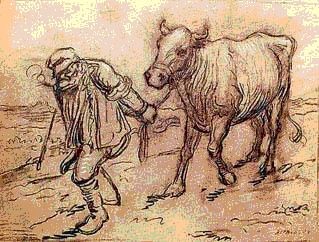
Jewish Life, European Life, and Shehita.
In sum, we can therefore estimate, by cross-checking these different data, that half of the Jews in our country eat kosher meat and would be concerned by its prohibition – or by the costs entailed, as in Switzerland, by the import of kosher meat from abroad because of the prohibition of shehita.
In a nutshell, those who eat only kosher meat are less numerous among the Jewish population, but they are far from being the negligible and fanatical minority that one might imagine. For them, the prohibition of shehita would be a final humiliation, the proverbial straw that broke the camel’s back.
If such people were to leave France – and many would – their departure would be cruelly felt. Even those who do not care about shehita at all, insofar as they remain Jewish, depend on those who do: on the ten men present for the recitation of the Kaddish as well as the Seven Blessings of marriage, on those who marry them by witnessing or offering, of those who circumcise their children or prepare them for religious adulthood, of all those who fill the synagogues, which, without these “primitives” of whom they are sometimes a little ashamed, would only have to be transformed into museums as is the case in Venice, Prague or Switzerland.
Jews would remain, of course. Jewish individuals, anyway. But what makes up Jewish life, the whole social fabric of French Judaism, would disintegrate: Paris and Strasbourg would resemble Geneva and Zurich. In the long run, the French Jew would either be completely assimilated, incapable of transmitting Judaism to his descendants. The very wealthy would be exempt, but they would be alone in their exemption. It will be understood, therefore, that if the ambition of liberal Judaism, particularly in France, is to establish itself permanently in the Diaspora and to remain independent of Israel while at the same time shaping a more diverse and lively community, its disinterest in the question of shehita is a very bad calculation, and this is true of all Jews who refuse to recognize themselves in any denomination and who consider themselves simply “traditionalists”. It is precisely they who need this fabric, which some of the most religious as well as the most acculturated can do without.
It is therefore Jewish singularity which is at stake in the persistence of sacred rites, including the shehita. Through them, the Jews are flesh and defend the flesh. Through them, a people resistant to totalization, they bear witness for all others. Tocqueville writes in Democracy in America that,”Everything was different in the old societies. Unity and uniformity were nowhere to be found. Everything threatens to become so similar in ours that the particular appearance of each individual will soon be lost entirely in the common physiognomy. “In the past, the Jews had at least the honor of being in cordibus hostes, in codicibus testes.”[4]
The uniqueness of their “face” seems aberrant to advocates of a gentle homogeneity, of a “living together” of drab uniformity. Jewish difference is intolerable to those who, loving Jews only if they resemble them, cannot imagine that their thousand-year-old practices belong, like the sound of bells, to European time and space. Contemporary Babelism sees in them only foreigners or primitives, resistant to the “common physiognomy”. On the one hand, progressives and globalists denounce in shehita (or circumcision) the lingering of barbarism; on the other hand, reactionaries and nationalists contest the idea that one need not resemble one’s neighbors. Homogeneity creeps in more and more, on one hand in the Starbucks present on the streets of major cities, on the other disappearance of local accents and the flattening of regional differences. The same homogeneity targets shehita.
Judaism will endure even in a modern world in which the Tower of Babel becomes anew emblematic, a world in which we must all speak the same language and express the same ideas. Judaism needs Europe, but will find a way to survive without her, if now a separation is forced by the law and gentle means, whereas in times past, relations were strained and almost broken by wanton cruelty. Let us only hope that Europe understands it is a human imperative that we do not all eat the same thing, that we do not all eat in the same way, that for some men at least, eating remains a sacred act. Let us hope Europe is wise enough to still contain within her a force capable of teaching the world to be different, a force which, by its very primitiveness, is indeed her last link to the past, the last link that unites her to herself. If the exiled European Jews must think melancholically of the continent which saw them born, then the moment will come, sooner or later, when they will be able to take up the suspended lyre. Without the Jews, Europe will never be Europe again. And that it drove them from their homes by dint of benevolence, rather than by cruelty and force, will not change a thing.
David Haziza
Notes
| 1 | Weinberg was a complex personality, at the crossroads of worlds. Born in Poland in 1884, he studied at the Slabodka Yeshiva, near Kaunas in Lithuania. He combined a very rigorous knowledge of Halakha with a deep interest in Mussar – the moral and religious spirituality that emerged from the teachings of “Lithuanian” (often Belorussian) Judaism, which was opposed to both Hasidism and Haskala, or the Jewish Enlightenment movement. Y. Y. Weinberg headed the rabbinical seminary in Berlin, becoming a figure of German neo-orthodoxy despite his Polish origins and his strictly Orthodox and “Lithuanian” upbringing. Having returned to Poland in 1939, he survived the Warsaw Ghetto and spent the rest of his life in Switzerland, in Montreux. He is known as the Seridei Esh, from the title of his collection of halakhic rulings “plucked from the flames” of the Shoah. |
| 2 | Seridei Esh, p.199. Weinberg refers to a well-known principle in Tractate Sanhedrin (74a-b). Only murder, incest and idolatry are normally such sins that death should be preferred to them. In all other cases, one transgresses because the Torah was given to live by it and not to die by it. However, if it is a power that is an enemy of Israel and its law that has commanded the violation of any commandment, then martyrdom is preferable – even if it is to respect the Jewish custom of tying the straps of one’s sandals. |
| 3 | Ibid., p.28. |
| 4 | “By the heart of our enemies, by their books our witnesses.” Saint Augustine, On Faith in Things Not Seen, VI. |


